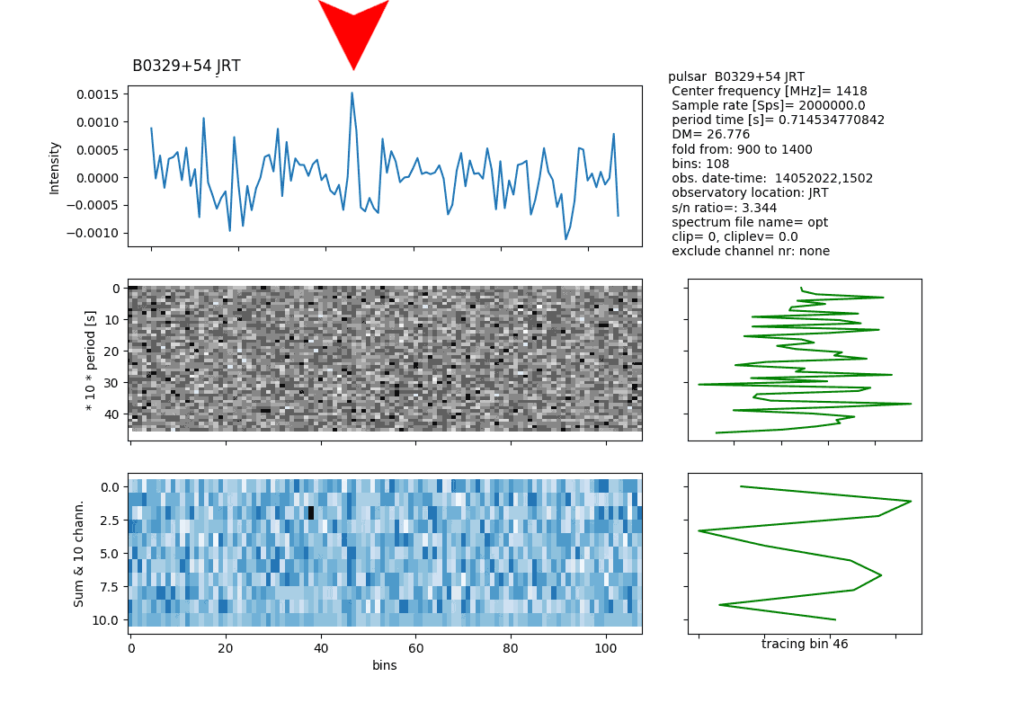Over the past few years Job Geheniau has been constantly surprising us with his amateur radio astronomy results coming from modest dish sizes and low cost SDR equipment like an RTL-SDR. We've seen him perform full sky hydrogen line surveys, measure galactic rotation, image the Cygnus star forming region, image the Cassiopeia A supernova remnant, detect interstellar high velocity clouds and observe a red supergiant star.
Job's latest work has seen him detect Pulsar B0329+54 with his 1.9m dish and an RTL-SDR. He writes:
A pulsar is the rapidly spinning and pulsating remnant of an exploded star.
PSR B0329+54 is a pulsar approximately 3,460 light-years away in the constellation of Camelopardalis. It completes one rotation every 0.71452 seconds and is approximately 5 million years old
Everything indicates that I may have been able to detect the pulsar B0329+54 with JRT [Job's Radio Telescope]. This dish has a diameter of 1.9 meters, which would make it the first time (!) this pulsar has been detected with a dish of this size as far as I can tell. This result was obtained thanks to the good help and software of Michiel Klaassen.
Job has also provided a PDF file that documents his setup and results in more detail, which we have uploaded to our server here.
